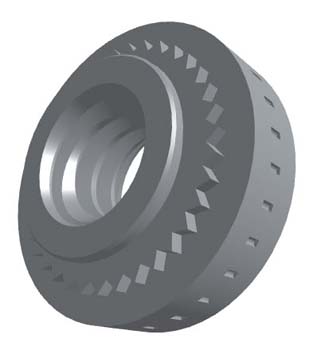Self-Clinching Standoffs
Welcome to our comprehensive product description for Self-Clinching Standoffs. In this guide, we will explore the world of these innovative and reliable fastening solutions that provide a versatile and secure method for spacing and supporting components in various applications. Self-clinching standoffs are designed to be permanently installed into pre-punched holes, creating a stable and elevated platform for stacking or spacing electronic boards, panels, and other components without the need for additional hardware or tools.
Key Features and Benefits
Self-clinching standoffs offer a wide range of features and benefits that make them essential components for electronics and other industries. Let's explore some of their key advantages:
- Stacking and Spacing Solution: These standoffs are specifically designed to create a stable and elevated platform for stacking or spacing components in electronic assemblies.
- Secure Fastening: Once installed, self-clinching standoffs provide a reliable and permanent support structure, ensuring components remain securely in place.
- Slide-Top Design: The slide-top feature allows for easy insertion and removal of components, simplifying assembly and maintenance processes.
- Simple Installation: The installation process involves pressing the standoff into a pre-punched hole, eliminating the need for additional hardware or tools.
- Versatile Applications: Self-clinching standoffs are used in electronics, telecommunications, automotive, aerospace, and more.
- High Strength: Despite their small size, these standoffs offer excellent load-bearing capacity, making them suitable for various applications.
- Space-Saving: These standoffs optimize space in assemblies, allowing for compact and efficient designs.
- Resistant to Vibration: Self-clinching standoffs provide excellent resistance to vibration, ensuring components remain secure in dynamic environments.
- Reusability: These standoffs can withstand multiple insertions and removals without compromising their integrity.
- No Surface Protrusion: Once installed, these standoffs do not protrude from the surface, creating a clean and aesthetically pleasing appearance.
Types of Self-Clinching Standoffs
Self-clinching standoffs come in different styles and sizes to accommodate various application requirements. Some common types include:
- Round Standoffs: These standoffs have a round shape and are suitable for general spacing and support applications.
- Hexagonal Standoffs: These standoffs have a hexagonal shape, providing additional stability for heavy or high-load components.
- Flanged Standoffs: These standoffs have a flange that provides a larger bearing surface, distributing the load and preventing damage to the host material.
- Thru-Hole Standoffs: These standoffs have a threaded shank that extends through the panel, providing a threaded post on both sides for easy attachment of mating hardware.
Applications
Self-clinching standoffs find numerous applications across various industries due to their versatile and secure fastening capabilities. Some common applications include:
- Electronics: Used in PCBs, electronic enclosures, and racks for spacing and supporting electronic components and boards.
- Telecommunications: Found in networking equipment and data centers for securing and spacing electronic modules and panels.
- Automotive: Utilized in automotive electronics, navigation systems, and infotainment units for reliable and space-saving support solutions.
- Aerospace and Aviation: Used in aircraft instrumentation panels, avionics, and control systems for secure and compact spacing.
- Consumer Electronics: Employed in smartphones, laptops, and other devices for efficient and space-saving component support.
- Industrial Machinery: Found in control panels, motor drives, and automation systems for reliable and organized component spacing.
- Medical Devices: Used in medical equipment and devices for secure and precise spacing of components.
Installation Process
The installation of self-clinching standoffs is a straightforward process that involves the following steps:
- Preparation: Ensure that the panel has the correct hole size and design for the specific standoff.
- Insertion: Insert the standoff into the pre-punched hole.
- Application of Force: Using a press or installation tool, apply sufficient force to the standoff to clinch it securely into the material.
- Verification: Confirm that the standoff is correctly installed and providing a stable and elevated platform for component spacing.
Quality Assurance
At OneMonroe, we take pride in delivering high-quality self-clinching standoffs to our valued customers. Our manufacturing processes adhere to stringent quality standards, and each standoff undergoes rigorous testing to ensure its reliability and performance. We are committed to providing products that meet or exceed industry specifications and offer lasting performance in diverse applications.
Conclusion
In conclusion, our Self-Clinching Standoffs offer a secure and versatile solution for spacing and supporting components. The self-clinching feature ensures a permanent and sturdy attachment, making them ideal for various panel and sheet metal applications. Whether you need standoffs for electronics, industrial equipment, or architectural projects, our Self-Clinching Standoffs deliver a reliable and user-friendly solution. Experience the convenience and flexibility of our Self-Clinching Standoffs by exploring our comprehensive range today.










